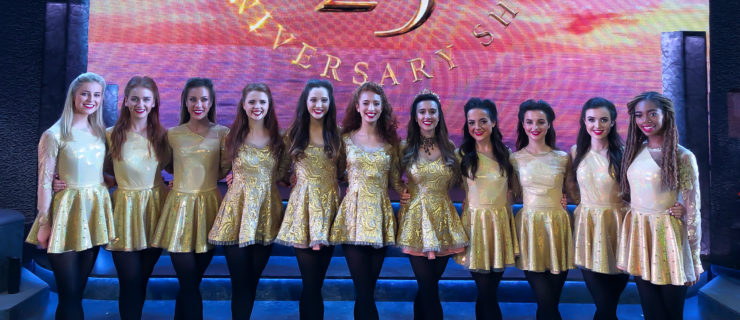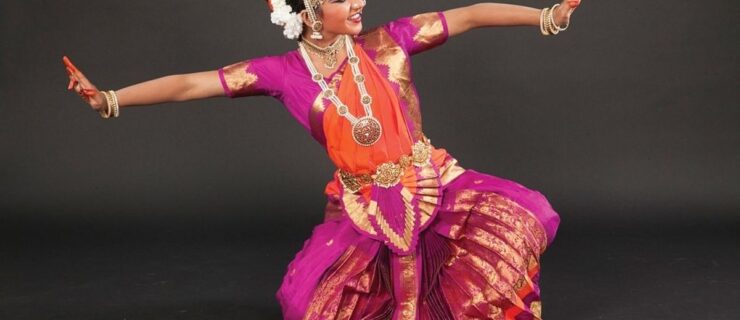Nakul Dev Mahajan: The Mastermind Behind Bollywood
The red-hot Bollywood routines choreographed by Nakul Dev Mahajan for the past three seasons of “So You Think You Can Dance” have repeatedly earned contestants seats on the hot tamale train. The intricate hand movements and high-energy steps have struck a chord with audiences as well: Mahajan’s routine for Season 4’s Joshua and Katee spent a week atop YouTube’s “Most Viewed” list!
For Mahajan, these accomplishments are the culmination of a longtime devotion to raising the profile of Bollywood dance. “For years, Bollywood dancing wasn’t even seen as dance,” he says. “People thought it was a freestyle form of dance that could be done by anyone.”
His mission to showcase the artistry and excitement of Bollywood dance is still going strong—and it seems to be working. His “SYTYCD” numbers have even inspired a slew of routines at competitions. Read on to get the scoop on how Mahajan helped bring Indian dance to the U.S.
Dance Spirit: You were essentially self-trained and didn’t take your first “real” dance class until age 18. How were you introduced to the Bollywood style?
Nakul Dev Mahajan:
I’ve lived in L.A. my entire life, but when my mom was eight months pregnant, she traveled to India and I was born there. I grew up watching Bollywood movies; my mom and dad are avid fans. For immigrants who live outside India, it’s a bind that keeps our roots intact and a way of getting our cultural fix. I was drawn to Bollywood, this genre of movies that are so over the top and colorful, especially the ones featuring actor Amitabh Bachchan. He’s an icon, a legend whose status in India is probably equal to that of Michael Jackson in the U.S. He took dance to a different level, and my way of learning was by watching him and mimicking the routines I saw onscreen. It was magical. I didn’t really know if I was doing it correctly, but it seemed innate.
DS: When did dance first become a viable profession for you?
NDM:
Before I had the courage to show anyone my dancing, I would dance alone in my room. However, family friends had seen me dance at parties and talked me into doing a charity event when I was 16. I didn’t know it would be the start of something amazing! Offer after offer came in to perform at other places. I also started taking classes from Indian guru Vandana Sheth and training seriously in Kathak dance. Soon I started competing, and enjoyed a five-year winning streak at the [South Asian dance-oriented] Ziba Dance Competition. In 1998, I formed a group called NDM Bollywood Dance Productions and started performing around the country. What began as a hobby became a bona fide Bollywood dance company.
After graduation from University of California, Riverside, I decided to open a Bollywood dance studio. We launched in 2003 in Artesia, CA, which was essential because there is a portion of the city known as Little India. What I thought would be a weekend gig turned into a full-time job over the next five years! We now serve more than 600 kids a year, and we’ve opened locations in Irvine, Northridge and Bel-Air.
DS: So how did you end up working on “SYTYCD”?
NDM:
Nigel Lythgoe is such a worldly person in terms of embracing other cultures. “SYTYCD” brought Bollywood dance to national television at least a year before Slumdog Millionaire came out; the producers wanted to add a new element to their existing repertoire. Prior to the show, I had the privilege of choreographing for “The Office” and “Passions,” so the “SYTYCD” producers felt I would be the right guy for the job.
DS: How do traditional Indian dance styles differ from the more modern styles seen in popular culture?
NDM:
Kathak is a classical North Indian dance form and the southern version of it is Bharata Natyam. My style is heavily influenced by classical Indian dancing; I feel that classical dance will never die. I do incorporate a lot of Western moves in my choreography, but what sets it apart is its authenticity and the cultural aspect of its movement.
DS: Any advice for dancers who want to learn Bollywood?
NDM:
Embrace the fact that it’s fun! It should bring a smile to people’s faces and have huge entertainment value. The level of energy in performance needs to be high, so dancers should throw themselves into the movement.
What exactly is Bollywood, anyway?
While Bollywood is now known as a dance style, the term originated in reference to the genre of Indian movies that derived its name from a combination of two words: Bombay and Hollywood. These big-screen favorites often revolve around a love story and include colorful musical numbers with throngs of dancers. Bollywood dancing incorporates everything from classical Indian dance to hip hop to ballroom elements, so it’s easy to wonder what exactly gives Bollywood its identity. According to Nakul Dev Mahajan: “Bollywood is basically a smorgasbord of world styles of dance put to a playback of Indian music on the big screen.” (The routines Mahajan creates for “SYTYCD” emulate these film dances.)
Another signature trademark of Bollywood dancing is its joyous, upbeat nature and fast-paced movements. Why all the whimsy? “Much of the Bollywood audience lives in Third World countries,” says Mahajan. “They love to look at the amazing costumes and exotic locations—people want to escape from their lives and Bollywood movies let them become part of the fantasy they’re watching.”
Photo by Mathieu Young/FOX



